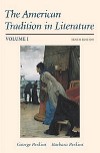Robert Frost's poems are usually set in domestic and natural arenas-an orchard, a familiar (or unfamiliar) path, around a kitchen table, or beside a work shed. Observations of arm instruments like an ax or shovel, or small animals and both wild and domesticated plants, trigger themes that connect as familiar insights to readers. Unlike his early twentieth-century contemporaries whose works often explode off the page in the open forms of free verse (Frost was no friend of Sandburg, his rival as the voice of the American people), Robert Frost established order in each of his works through the mastery of traditional poetic principles of rhythm and rhyming patterns. The cadences of his poems repeat the patterns of expository speech but, through refrains, lift the lines and elevate the critical experience of each work. |



 2003 McGraw-Hill Higher Education
2003 McGraw-Hill Higher Education